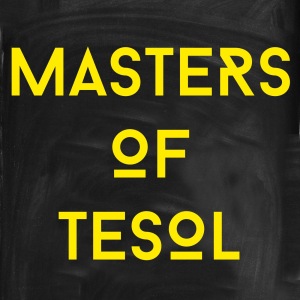languages
22 – Online Learning Past and Future – Stafford Lumsden
{bleep bloop bleep} I booted up cyborg teacher Stafford Lumsden to talk about online learning and the changing perception of what exactly a classroom is. We are more connected than ever and this shift in technology is changing the options that students have and how we teach. We discuss….
- distance learning
- e-learning vs online learning
- Is online education as ‘good’ as offline?
- Basics of having a repository
- LMS – Learning Management System – create assignments, give feedback, students upload and interact with each other and the instructor
- The pros and cons of a fully online classroom
- No one-size-fits-all with online teaching
Useful resources:
Google – heard of it? add dot com. It’s quite good.
Google Sites – make your own web pages
classroom.google.com – education specific ‘classrooms’. Students can submit and track assignments. Teachers can receive and give feedback on assignments all within the Google eco-system.
wix.com – make your own web pages
moodle.org – open source LMS. Requires some computer savvy to use
Blackboard.com – pricy. Would require financial support from your department
21.5 – Thinking Skills – VIDEO!
I am branching out into video.
Please watch, subscribe, like and all those things that everyone on YouTube is begging you to do! This is the first step of an expansion of MOT with the aim of eventually making materials for you to use in your own classes.
Please smash “subscribe”, pummel “like” and all that other YouTube stuff.
First Video – https://youtu.be/FWE2JPBf-PI
Channel – http://www.youtube.com/channel/UCKbariMdEytYHdmkpXiILnQ/
Keywords: Bloom, Thinking Skills, Bloom’s Taxonomy, ESL, EFL, TESOL, TEFL, CELTA, DELTA, linguistics, language, second language, teaching, learning, English, bilingual, multilingual, cognition,
19 – Reflective Practice – Thomas Farrell
The self-styled ‘bad boy’ of language teaching, Thomas Farrell, dropped by my office to take about self reflection. What do we do in the classroom and, importantly, WHY do we do it? Who are YOU as a teacher and what do YOU bring into the classroom?
Start adding this reflective practice regularly to your professional life and you’ll be surprised at the difference it can make to your personal and professional development.
Also a good lesson about having a safety net. I recorded this with my fancy MICs but the recordings failed for some reason, so this is based on my phone back-up recording. Phew….
18 – Discourse Markers – Jon Campbell-Larsen

Well, discourse markers are kinda a feature of, like, natural speech in, you know, basically every language. Jon Campbell-Larsen takes us through the how and why of teaching Discourse Markers. Here is a link to an example of how to scaffold students practicing these markers (based on Jon’s KOTESOL hand out). Feel free to adapt it for your own classes.
Keywords: ESL, EFL, TESOL, TEFL, CELTA, DELTA, discourse markers, discourse, markers, linguistics, language, second language, teaching, learning, English, bilingual, multilingual, cognition, students, education,
KOTESOL upload coming soon!
Hello to the people who attended my KOTESOL pronunciation workshop. I’ve managed to upload the colour vowel chart already. I’ll be uploading the video and the materials and ideas after the insanity of midterm grading has subsided. So check back soon!
15 – The Student Becomes The Teacher – Justin McKibben

In the first of this batch of hit-n-run quickie interviews from the KOTESOL conference in Seoul at the end of 2016, I spoke to Justin McKibben about how we can expand students roles. By giving students certain speaking tasks the traditional classroom would consider a teacher’s job, we can vastly increase student talk time and give them a broader sense of control in their own classroom.
Justin takes us through some of the techniques we can use in our classrooms to shift away from the traditional teacher-fronted classroom. You can start using these techniques immediately.
STT, TTT, ESL, EFL, TEFL, TESOL, CELTA, DELTA, teacher-fronted classroom, teaching, English,
Language and Colour Boundaries/Perception – blue or green, and how red is your wine?
The whole “blue/black-white/gold” dress photo that’s been doing the rounds in the last week or so reminded me of a very interesting point about language and perception of color.

As the dress debate went global and multilingual, perhaps not all of the disagreement on the colours may be down to how an individual’s brain is interpreting light information from the eyes. For decades, linguists have gone back and forth over whether the names for colours affect how we perceive them.

Think about it: red wine, red hair, robin red breast – these are all colour-specific descriptions that are inaccurate at best. Or, at least, they’re inaccurate now. Just a few centuries ago, “orange” as a range on the colour spectrum was simply part of “red” without a named colour category of its own. White wine, black eye… there are many examples in everyday language where the description of colour clearly doesn’t match the reality.


